|
|

|
|
|
|
|
Facility News
👻 + 🎃 Boo! It's Halloween Month! October 31st falls on a Monday, how amazing it would be to start the week with a bit of craziness! It is true that Halloween doesn't mean as much in Switzerland as it does in the US but it doesn't take much to make it fun again ! What will be the crazy nightmare that come alive on that day ? Werewolves, vampires or Elon Musk ?? Trust the FCF Team to find worthy science related nightmare. Who will dare to come to work, dressed up as Zombie Aqua ? Who will have the audacity to greet us as the elusive FMO-nster ? Make that day yours and surprise us !
|
In this month FACS Tips, we are bringing more Gating tricks and tips to facilitate the analysis of your fcs files ! Made sure to read it carefully as we will have another quiz for you to answer about it !
|
|
Last month Quiz was won by Chakradhar Yakkala ! Not only did he get the traditional FCF Toblerone but also a customized mug as promised in the previous newsletter. Congratulations man !
|
|
|
A close-up to that art masterpiece and 2.0 meme goodness :
|
|
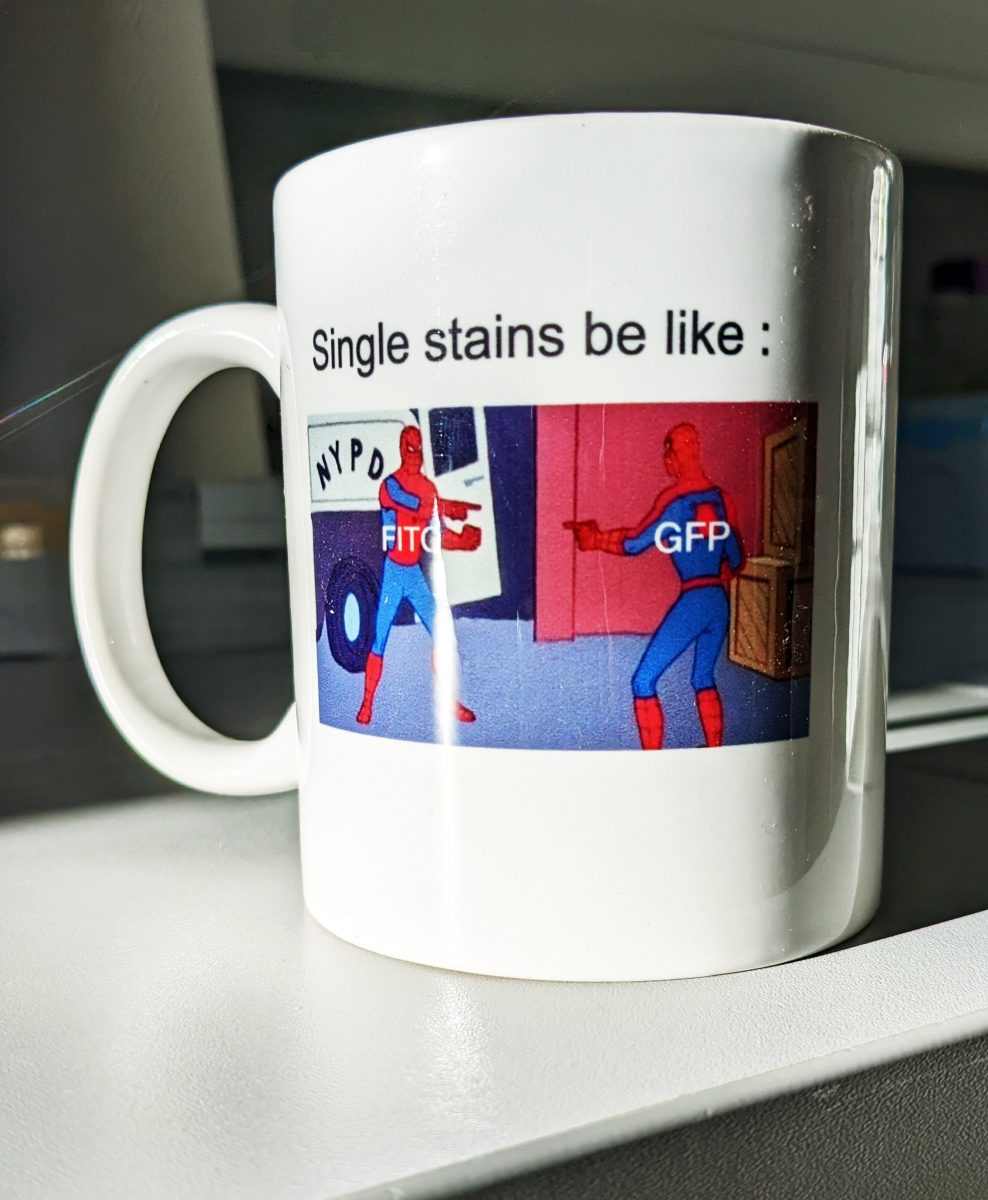
|
|
Each month, we will give away a special and unique mug designed by the team so please take few minutes to answer the quiz.
|
|
As usual, three ways to answer :
|
- By filling up the paper next to the machines in the main FCF Facility in both the Agora and the Epalinges site.
- By clicking on THIS LINK.
- By scanning the QR Code taped on each machine.
|
|
|
FACS Tips
|
Gating 2: Ands, Ors, and Nots
While we touched on some of the basics of gating in our previous newsletter, there are some more advanced features that may be of interest for your experiments that we can take a chance to explore.
|
|
Once we’ve laid out the steps of our analysis, removing unwanted cells and finally gating on our population of interest, there is value in working backwards from there to clean up our gating, but also to make sure we didn’t miss anything. This is aided by tools like ancestry and backgating.
|
|
It’s important to start by saying ancestry and backgating are not the same thing. Oftentimes when we say backgating what we actually meant was ancestry.
|
Ancestry
Ancestry is simply the process of looking at how your population of interest fell in gates further up in the hierarchy. This can help to guide when to tighten or loosen gates if the initial setting may have been incorrect. It also can be useful to show a desired population alongside another population that would not co-express the same marker of interest to provide a reference for gating. Ancestry is easy to check in DIVA, just by right clicking a plot and showing the population of interest.
|
|
If you particularly like this view, and the general analysis set up of DIVA, you may be interested in trying FCS Express analysis software as it presents your analysis more as a worksheet like what you would be familiar with in DIVA. It also has nice features to let you select gates to display to show hierarchy as you would show in DIVA.
|
|
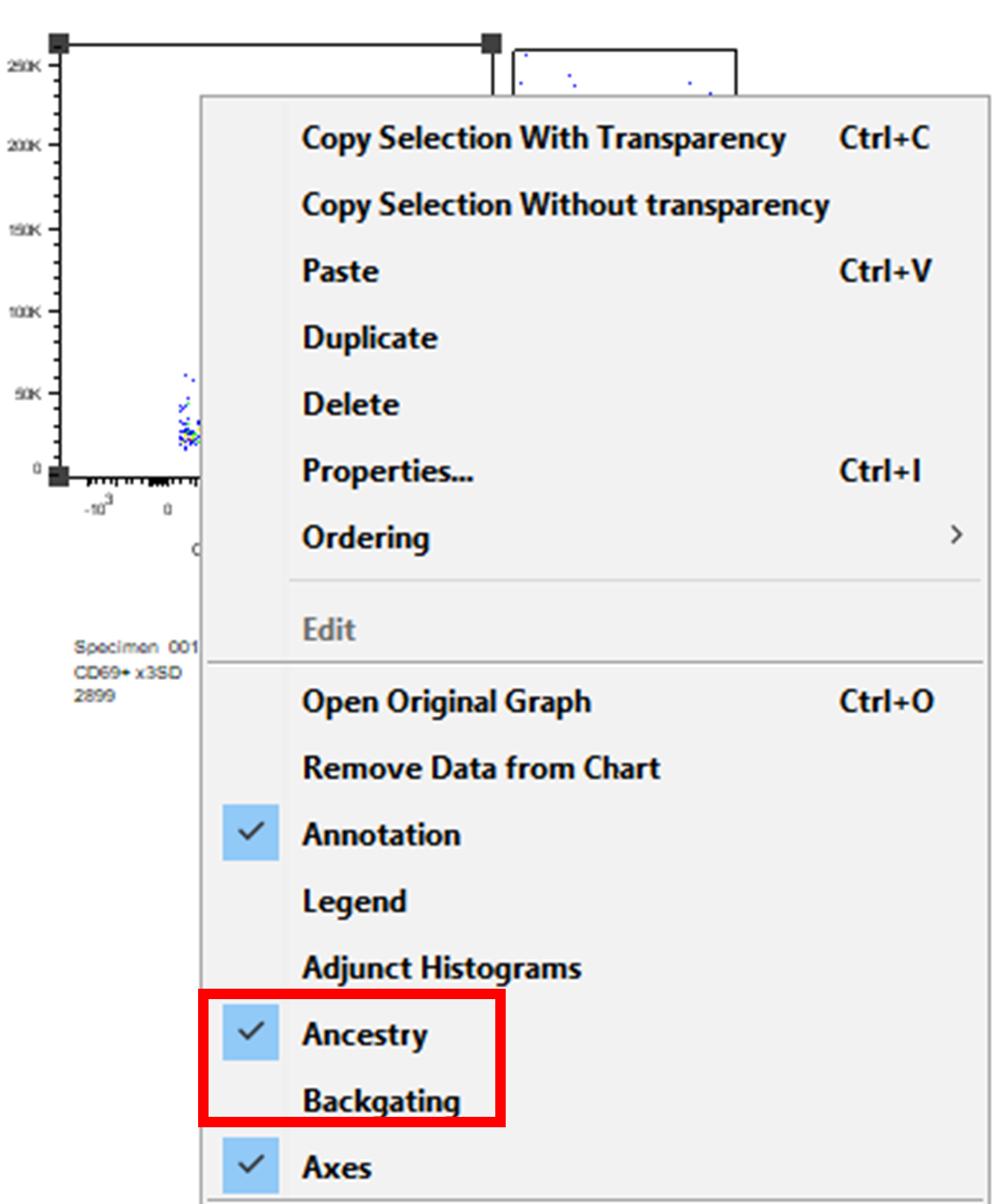
|
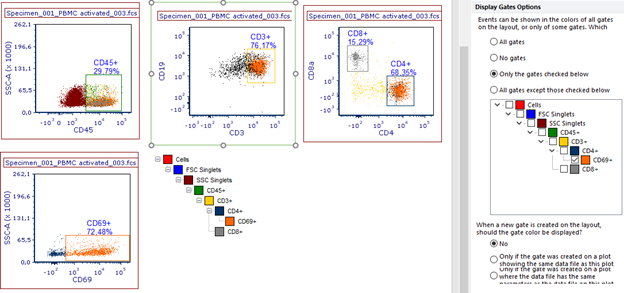
|
|
|
Backgating
Backgating is more complex than ancestry. In FlowJo, backgating is a representation of a terminal gate of interest overlaid over the previous gating hierarchy structure, but without regard to that gate being illustrated. For example, in the figure below, we are backgating to show the location of all CD69+ events regardless of the gate within each plot. This means that the red population you’re seeing distributed is not the true final population being displayed on the plot, but rather a derivative of the final population, not considering the gate on which it is overlaid. While the grey population is the remaining events.
|
|
The backgating tool allows for the ability to see the effect of every gate in the gating tree on the final gated population. So, this means that you can see where the final population of interest would lie, if that gate were not included. This can help validate gate positions, and also show where potential cells of interest were lost using the current gating hierarchy, that would not have been seen by just going back through ancestry without any changes to the gates. However, it is not always useful. In the example presented, because many cells have the ability to express CD69, the CD4 x CD8 bivariate plot is almost entirely red, therefore we can’t get much assistance on gating in this situation. Backgating can easily be represented from the layout feature in FlowJo and it’s worth checking in all of your experiments.
|
|
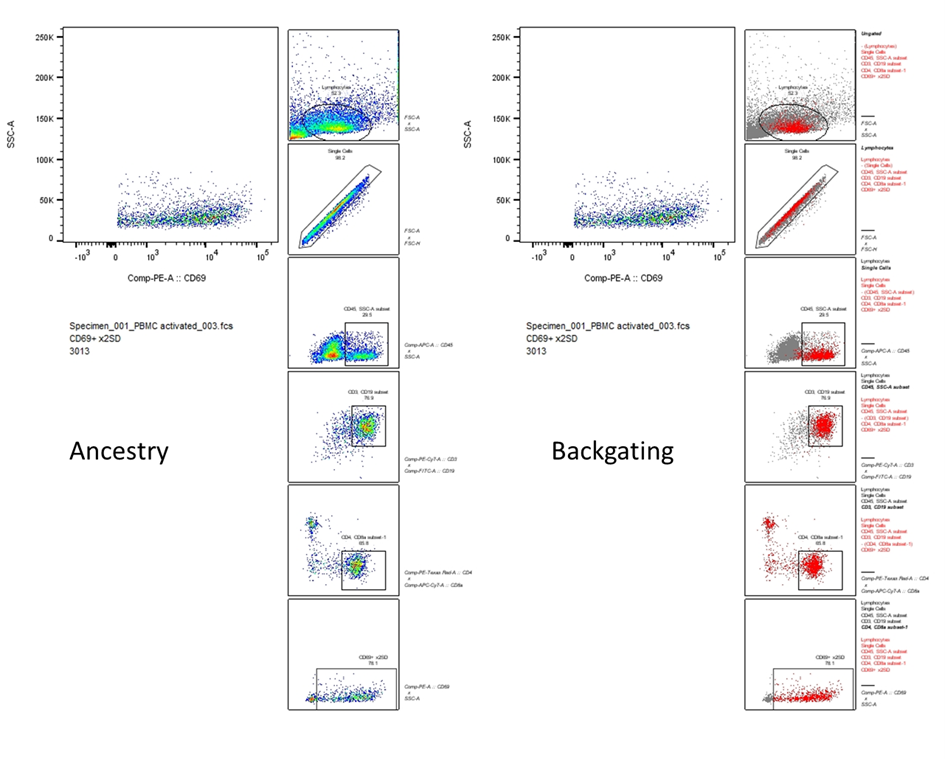
|
Boolean Gates
|
While we almost always default in our analysis to using hierarchical parent-child gating strategies, there is another approach we can take by asking rather “And”, “Or” or “Not”. This is a Boolean gating approach and when it comes to finding complicated subpopulations, it can be quite useful.
|
|
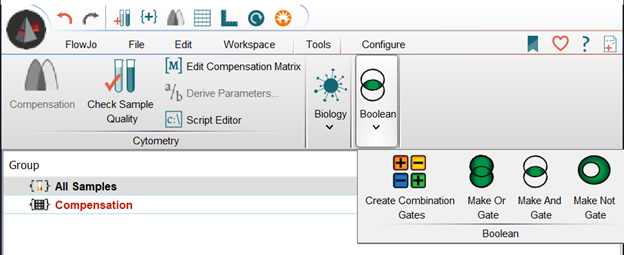
|
|
|

|
As expected from the names, “AND” gates can create populations from events that overlap for markers, this is what we do for classical hierarchical gating strategies. “OR” gates create populations that can have one or the other and “NOT” gates create a population of everything but a defined population. One possible use example for this can be one looking for a subtype that expresses markers/cytokines A and B, but not C.
|
Combination Gates
|
Combination gates will identify phenotypes that contain, lack, or share a combination of 3 or more markers. This is particularly useful in cytokine experiments, when you want to breakdown the cross expression of various cytokines. By selecting each individual phenotype from 1 parent population, you will automatically produce all the possible combinations as shown in the example below for the markers IFNg, TNFa, and PD-1. This can quickly produce valuable statistics for your experiment. This is particularly useful if you are using an analysis software like SPICE, which stands for Simplified Presentation of Incredibly Complex Evaluations. SPICE can analyze large FlowJo data sets and organize normalized data graphically.
|
|
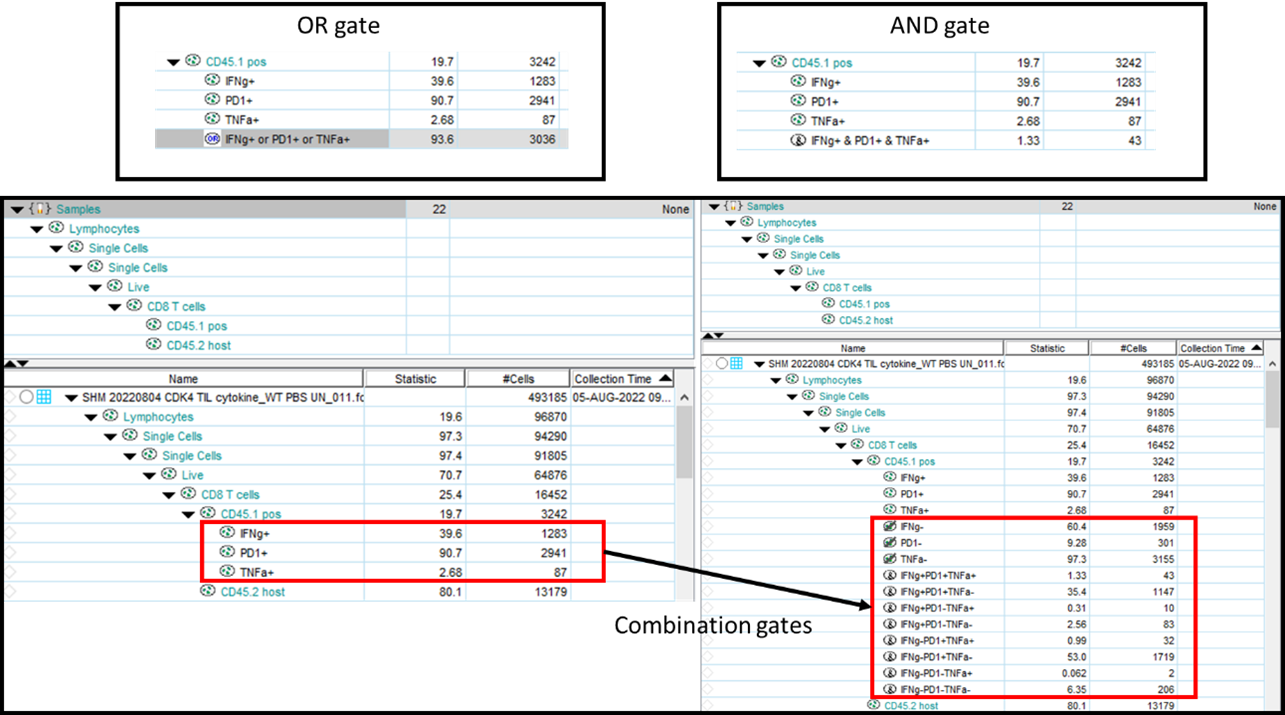
|
|
There are an ever-growing number of gating and analysis features, which can be both helpful and confusing. Knowing how to use them can streamline and improve our analysis though. While there are even more advanced features being added like machine learning algorithms and parameter reduction, sometimes the most basic ones are what we need to properly gate our data and so it’s always good to know what is available to us. As always, feel free to reach out to any member so the FCF staff if you have any questions.
|
|
|
|
|